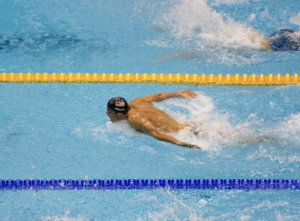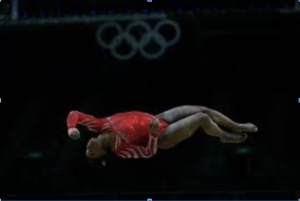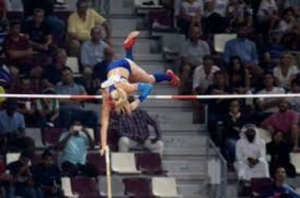The Olympics bring the world together every four years (or in the case of the Tokyo 2020 Olympics, every 5 years…thanks COVID-19) for competition, celebrations, and fun. People all over the globe enjoy watching athletes achieve the seemingly impossible. Whether it is Michael Phelps breaking records and becoming the most decorated Olympian of all time, Simone Biles performing yet another new trick to be named after her, or Sandi Morris trying to move from silver to gold this year with an impressive personal best of 5.00 meters in the pole vault, we all love hanging on the edge of our seats as the Olympians step up and give it their all. Of course this often leaves us wondering: how did they just do that??
The physics behind these feats can be complicated, but the details are crucial to improving the athletes’ form and precision. Their dedication to those minute differences is what makes them some of the best in the world. If you want to perform like them, here are the concepts you need to master.

Swimming like Phelps: Michael Phelps might be part fish. Honestly, I cannot be sure that he is fully human given his insane performances in the pool. Swimmers like Phelps use the force from their starts off the block or wall to create acceleration. The more force applied, the faster the acceleration. This is why the start of a race is crucial to a win. This relates to Newton’s Second Law of Motion: force is equal to mass times acceleration. Swimmers face forces in all directions. There is a downward force (weight), an upward force (buoyant force), forward force from actually swimming (thrust force), and a backwards force from the water resistance (drag force). In order to move forward, swimmers must overcome and optimize these different forces. There are various ways swimmers try to minimize their drag force and weight, including keeping their head and body in alignment, shaving body hair before big meets, wearing two swim caps and the best suits available, and streamlining their bodies on the start and turns.

Flipping like Biles: Simone Biles is all about power and rotations. She has truly mastered the science (art?) of angular momentum. One of her moves (because this woman is so good she has multiple) named The Biles is a triple-double on the floor. A triple-double is three twists and two full flips in the air. My brain cannot even comprehend that much rotation to be honest. Biles sprints across the floor, gaining translational kinetic energy (energy of motion). Once she launches into the air about 9.5 feet high, she uses her muscles to control her body through multiple twists and flips which take her about 6.5 feet from her launch point to complete. She has to convert her kinetic energy into rotational energy to twist quickly, but still stay under control. Her ability to land this trick is equally impressive. She comes down with force equal to about three times her weight. That is why she uses an extra pad to soften the impact. One physicist details each portion of her move and noted that while she might be slightly faster than other gymnasts, her coordination, control, and strength are likely what make her better than others. Biles must control every ounce of energy that she generates to successfully land her tricks and prevent injury.

Jumping like Morris: Sandi Morris took silver in the 2016 Rio Summer Olympics and hopes to improve on that performance this year in Tokyo. The average person cannot jump very high in general, let alone 5 meters (or 16.5 feet) over a horizontal pole. So how does she do it? Pole vaulters sprint towards their target, generating kinetic energy. Then, they use various techniques to convert that kinetic energy into gravitational potential energy. It is very important for pole vaulters to perfect their technique, because that allows them to optimize where their center of mass is in relation to the horizontal pole they are projecting themselves over. The easiest ways to increase the height of their jump include: using the lightest pole possible, running faster to accumulate more kinetic energy, utilizing their flexibility and strength to minimize the energy lost on take off, and adopting the V-form at their peak, which allows them to clear a bar that is placed higher than their center of gravity. Pole vaulters must become experts at energy conversion and conservation to pull off these impressive jumps.
With the closing ceremonies on August 8th, the 2020 (2021) Summer Olympic Games are in full swing. Make sure to tune in and watch your favorites compete for glory and gold, all while appreciating these phenomenal physical feats.
Peer Editor: Yogitha Chareddy